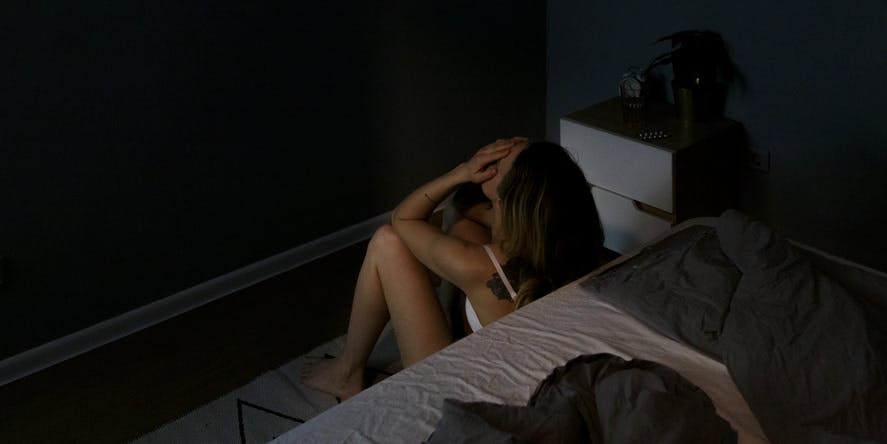
How to stop gout pain at night?

Topics
Key points:
- Gout is a common form of arthritis caused by high levels of blood uric acid that form crystals that inflame joints.
- Studies show that gout flares at night because of factors including dehydration, a lower body temperature and altered oxygen intake.
- A good diet, moderate exercise, abstaining from alcohol and staying hydrated can help reduce the risk of gout flares. When those fail, prescription medication can relieve pain and swelling in joints.
In 1780, Benjamin Franklin penned a hilarious conversation with his “enemy in person”—gout! In the cheeky back-and-forth, Franklin defends the sedentary lifestyle that Gout claims has caused the painful swelling of Franklin’s joints. Gout pushes back, pointing out that Franklin’s half-hour ride back from dinner in his carriage does not count as exercise.
FRANKLIN: Eh! Oh! eh! What have I done to merit these cruel sufferings?
GOUT: Many things; you have ate and drank too freely, and too much indulged those legs of yours in their indolence.
Back then, physicians believed that moderate diet and exercise could rid a body of gout entirely. So Franklin’s story ends with Gout claiming she is the remedy—not the disease. “I have a good number of twinges for you to-night, and you may be sure of some more tomorrow,” she says as she leaves Franklin struggling to sleep.
Humor aside, this horrifically painful condition can affect any American—not just those with posh carriages and drivers. And while symptoms do tend to flare at night, gout is also one of the easiest forms of arthritis to treat.
Here’s what to know about why gout flares at night. Plus, how you can tame the nocturnal symptoms with lifestyle changes—and prescription treatment.
What is gout?
Gout is a common form of arthritis that affects around 4% of the US adult population. It happens when urate crystals build up in joints, causing inflammation and pain.
Our bodies require a decent amount of uric acid to break down purines—which are found in foods like red meats, seafood and alcohol. This acid is supposed to dissolve in our blood and leave our body (via our kidneys) when we urinate. But if we build up too much uric acid—or our kidneys flush out too little—the acid can form sharp urate crystals that gather around and affect joints.
This inflammation causes severe pain, swelling, tenderness and redness. It usually presents in one of the big toes—but you can also get gout in knees, fingers, wrists, elbows and ankles.
Some people with gout describe the pain as feeling like their joint is on fire. Such flares usually peak for up to 12 hours, then linger moderately or mildly for a few weeks
Factors that increase the risk of developing gout include:
- Being over 65 years old
- Medical conditions like diabetes and hypertension
- Being post-menopausal
- Having a family history of kidney failure
- Being African American, Pacific Islander, Indigenous American or Hispanic
The good news is that prescription gout treatment and a few lifestyle changes can make nighttime flares less frequent and less severe.
Why does gout flare at night?
Gout isn’t the only condition people describe as getting worse at night. Many find that symptoms of the flu and sinus infections become more bothersome when they’re trying to sleep, too.
But one study specifies that gout flares are 2.4 times more likely to happen at night or during the early morning hours than during the day. When gout flares at night, even the weight of light sheets against the swollen, tender joint can feel unbearable. In another study, participants reported that night-time foot discomfort and joint flares made it difficult for them to get comfortable, that they got less deep sleep and that the flares caused anxiety and depression.
Researchers aren’t sure why this happens. But a few theories shed a little light.
Lower body temperature: Our body temperature drops over long periods as we sleep. This lower temperature can encourage the creation of urate crystals in the joints.
Nighttime dehydration: Dehydration discourages the release of uric acid in urine—and staying hydrated is one of the top ways to prevent gout flares. We become less hydrated as we sleep, which encourages the buildup of uric acid and the production of urate crystals.
Sleep apnea-induced restricted oxygen: For those with sleep apnea, the decrease in oxygen that happens during sleep means that you also breathe out less carbon dioxide. This excess carbon dioxide increases blood acidity—which then triggers uric acid production. (This can also happen for those who don’t have sleep apnea since most of us breathe more shallowly as we sleep.)
Alcohol digestion: Alcohol contains purines, causes dehydration and can alter cortisol levels—all of which can raise uric acid levels and prevent it from leaving your body.
How can I prevent gout attacks at night?
The best way to prevent nighttime gout flares is by making sure you’ve adequately eaten, moved and hydrated during the daytime hours. On top of practicing healthy sleep habits, set yourself up for a gout flare-free night by doing the following during the day:
- Eat well: Avoid high-purine foods like beef, pork, lamb, shellfish, sardines, and sweetened food and drinks. Also, limit your fructose intake—which is naturally found in unsweetened fruit juices—as it’s the only natural sugar that raises uric acid levels.
- Avoid alcohol: Limit alcohol consumption—and don’t drink any when you’re in a flare.
- Exercise: Low to moderate exercise can prevent the inflammatory response that follows uric acid crystallization. It can also strengthen joints and stretch muscles, which support overall joint health. (Bed yoga, anyone?)
- Stay hydrated: Adequate water consumption can reduce the risk of flares by around 45%. So stay hydrated during the daylight hours—and drink extra when you exercise or spend time in the sun.
- Take OTC pain relief: Over-the-counter nonsteroidal anti-inflammatory drugs (NSAIDs) like Ibuprofen (in Advil, Motrin, etc.) and Naproxen Sodium (in Aleve) can help reduce the swelling that comes with gout flares. Talk to your doctor before taking aspirin, as even low doses may slow uric acid from leaving your body.
- Get prescription relief: Common gout flare prescription treatments include Colchicine—an anti-inflammatory drug—and Predisone, a corticosteroid. These can reduce inflammation and pain at higher levels than many OTC medications. (See below for more.)
On top of the above, here’s how to treat a gout flare at night:
- Keep a glass of water near your bed to sip while awake during a flare—staying hydrated will help.
- Elevate the flaring joint to help reduce the swelling.
- Apply a cold compress or ice as needed to reduce the feeling of heat in your joints.
- Do some deep breathing exercises to encourage oxygen intake and carbon dioxide expression.
How can I get gout medicine online?
A diagnosis of gout doesn’t have to mean that you have to live with recurrent painful nighttime flares. Instead, it can help you find the right gout pill to reduce inflammation and pain.
Dr. B can help you get common medications like Colchicine, Indomethacin and Prednisone for gout flares with a $15 online consultation. We’ll let you choose the medication you want to try and help you secure the lowest medication cost at your local pharmacies. Here’s more on how our telehealth process works.
Sources:
Choi, H. K., et al. (2015). Nocturnal risk of gout attacks. Arthritis & Rheumatology
Franklin, B. (1780). Dialogue Between Franklin and the Gout. Matthews, B., ed. (1914). The Oxford Book of American Essays. Oxford University Press.
Jablonski, K., et al. (2020). Physical activity prevents acute inflammation in a gout model by downregulation of TLR2 on circulating neutrophils as well as inhibition of serum CXCL1 and is associated with decreased pain and inflammation in gout patients. PLoS One.
Kakutani-Hatayama, M.,et al. (2017). Nonpharmacological management of gout and hyperuricemia: hints for a better lifestyle. American Journal of Lifestyle Medicine.
Mayo Clinic. Gout: diagnosis and treatment.
National Kidney Foundation. Quick Facts: Gout and Chronic Kidney Disease
Neogi T., et al. (2014). Alcohol quantity and type on risk of recurrent gout attacks: an internet-based case-crossover study. The American Journal of Medicine.
Singh, J. A. (2018). Any sleep is a dream far away: A nominal group study assessing how gout affects sleep. Rheumatology.
Zhang, Y., et al. (2014). Low-dose aspirin use and recurrent gout attacks. Annals of the Rheumatic Diseases.
Topics
Sign up for the free Dr. B newsletter for a weekly report on the latest in healthcare + research-based advice for staying healthy and mentally well.
